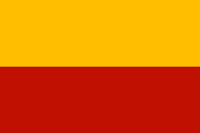 On Monday, July 1st, Croatia will join the European Union as its 28th member. It has taken 10 years for Croatia to meet the requirements for entry. I wonder if they will still be celebrating when I go to Dubrovnik at the end of the week.
On Monday, July 1st, Croatia will join the European Union as its 28th member. It has taken 10 years for Croatia to meet the requirements for entry. I wonder if they will still be celebrating when I go to Dubrovnik at the end of the week.Among the many things required, Croatia had to reform its judicial system in terms of independence, accountability, impartiality, and efficiency. There was a crackdown on corruption and organized crime. Human rights had to be improved, along with the protection of minorities and settling outstanding refugee return issues.
The country had to extradite several Croatian citizens to the International Criminal Tribunal for the Former Yugoslavia (ICTY) due to the Balkan War. Croatia also had to stop subsidizing its shipbuilding industry.
 There was also a long-running border dispute with Slovenia that needed to be addressed. Once it officially joins the EU, it will have to exit the Central European Free Trade Agreement (CEFTA).
There was also a long-running border dispute with Slovenia that needed to be addressed. Once it officially joins the EU, it will have to exit the Central European Free Trade Agreement (CEFTA). There will be increased ease of movement in and out of Croatia. As an EU member, Croatians will be able to enter any EU state with only a Croatian ID card. No more passports required. Croatia will have to eventually join the Schengen area by 2015. This requires Croatia to change its current policies and start requiring visas for travelers from Russia, Turkey and Ukraine.
 Croatia will keep the Kuna as its currency. However, it must eventually adopt the Euro once it fulfills further requirements.
Croatia will keep the Kuna as its currency. However, it must eventually adopt the Euro once it fulfills further requirements. There are a lot of good reasons to join the EU. However, things are not all sunshine and roses. There are concerns on both sides right now about expanding the EU roster given the current financial situation. Here's a video I found out on YouTube that has a few more details.
© European Parliament
Update 2023: Croatia joined both the Eurozone and Schengen area.













.png)















.jpg)


.jpg)
.jpg)
.jpg)
.jpg)
.jpg)
























